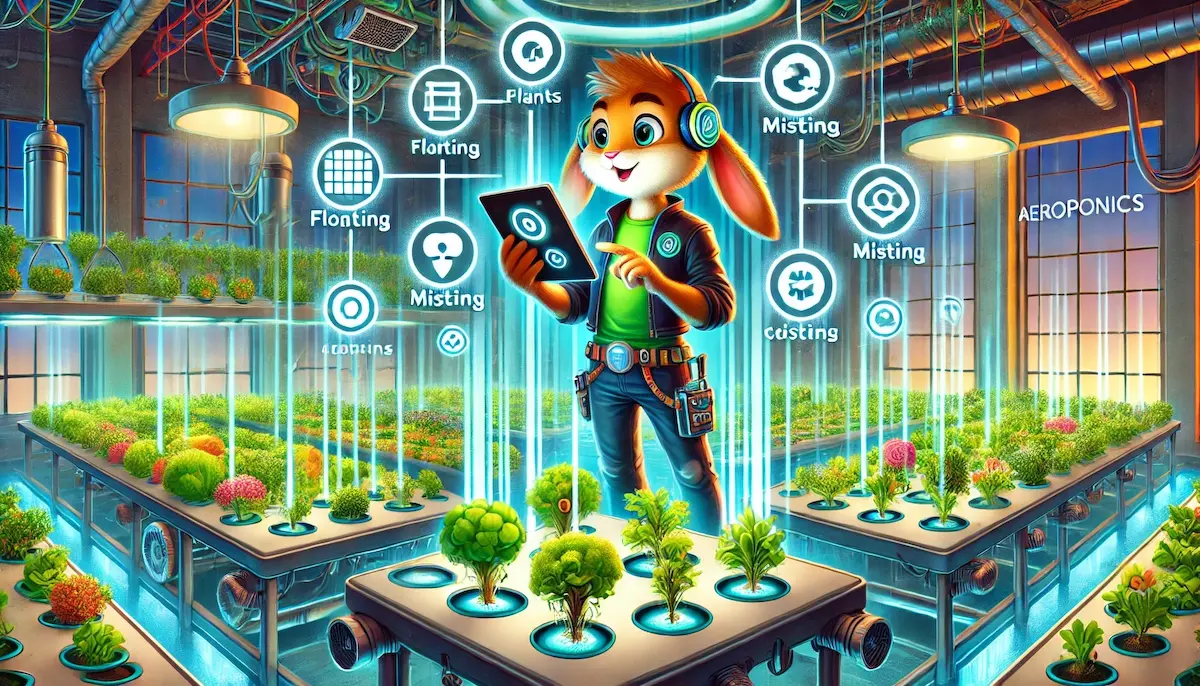Aeroponics is a cutting-edge agricultural technique that involves growing plants with their roots suspended in the air and misted with a nutrient-rich solution. This innovative method offers numerous advantages, including faster growth rates, higher yields, and efficient use of resources, making it a promising solution for sustainable farming.
What is Aeroponics?
Aeroponics is a form of hydroponics where plants are grown without soil. Instead of using a water-based solution as in traditional hydroponics, aeroponics delivers nutrients directly to the plant roots through a fine mist. This method ensures that roots receive ample oxygen, which is essential for healthy growth and robust plant development.
How Aeroponics Works
Plant Suspension
In an aeroponic system, plants are anchored in place, usually in a lightweight structure that holds the plants upright while leaving their roots exposed to the air. This setup allows the roots to dangle freely and receive maximum oxygen exposure.
Nutrient Misting
A nutrient-rich solution is periodically misted onto the roots using high-pressure pumps and fine nozzles. This mist contains all the essential nutrients that plants need to grow. The frequency and duration of misting are carefully controlled to ensure that the roots remain moist and well-nourished without being waterlogged.
Controlled Environment
Aeroponic systems are typically housed in controlled environments, such as greenhouses or indoor growing facilities. This allows for precise regulation of temperature, humidity, light, and nutrient delivery. The controlled environment helps optimize plant growth and reduces the risk of pests and diseases.
Benefits of Aeroponics
Aeroponics offers several significant benefits that make it an attractive option for modern agriculture.
Faster Growth and Higher Yields
Aeroponics provides plants with optimal conditions for growth, leading to faster growth rates and higher yields compared to traditional soil-based and even other hydroponic methods. The constant supply of oxygen and nutrients directly to the roots promotes vigorous growth.
Efficient Use of Resources
Aeroponics uses significantly less water than traditional farming methods. The misting system ensures that plants receive only the amount of water they need, reducing waste. Additionally, the nutrient solution can be recycled, further conserving resources.
Space Efficiency
Aeroponic systems can be designed vertically, allowing for high-density planting in small spaces. This makes aeroponics ideal for urban farming and areas with limited arable land. Vertical aeroponic farms can produce a large amount of food in a compact area.
Reduced Pesticide Use
The controlled environment of aeroponic systems minimizes the need for chemical pesticides and herbicides. Plants are less susceptible to soil-borne diseases and pests, resulting in healthier crops and a lower environmental impact.
Improved Nutrient Uptake
The fine mist delivered in aeroponics ensures that nutrients are evenly distributed and readily available to the roots. This leads to more efficient nutrient uptake and healthier plants with better growth and yield potential.
Challenges and Future Outlook
While aeroponics offers many advantages, it also presents challenges such as high initial setup costs, the need for technical expertise, and the requirement for precise monitoring of environmental conditions. However, ongoing technological advancements and increasing interest in sustainable agriculture are making aeroponics more accessible and cost-effective.
The future of aeroponics looks promising as global populations grow and the demand for sustainable food production rises. Innovations in automation, artificial intelligence, and renewable energy are expected to further enhance the efficiency and scalability of aeroponic systems. As these technologies continue to develop, aeroponics has the potential to become a key component of the future food production landscape, offering a sustainable and efficient way to grow healthy, high-quality crops.
Blockfine thanks you for reading and hopes you found this article helpful.
